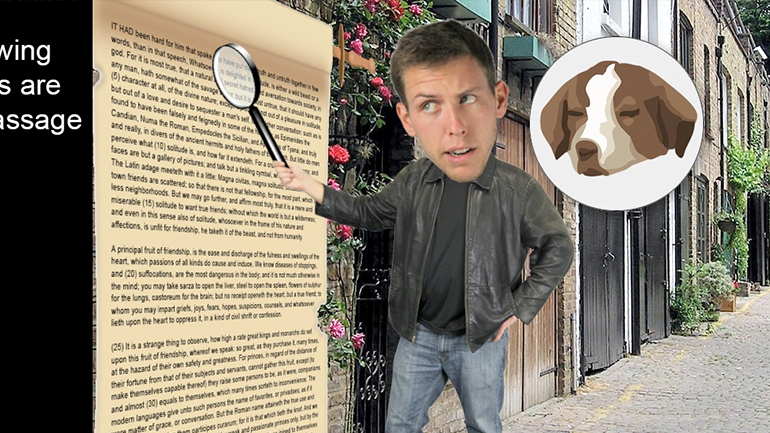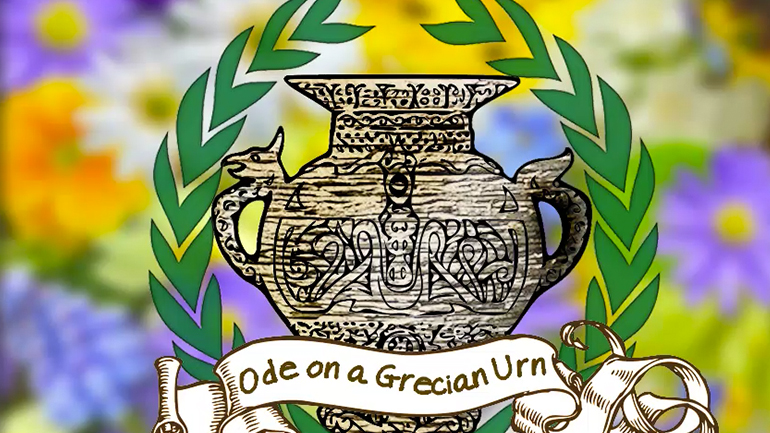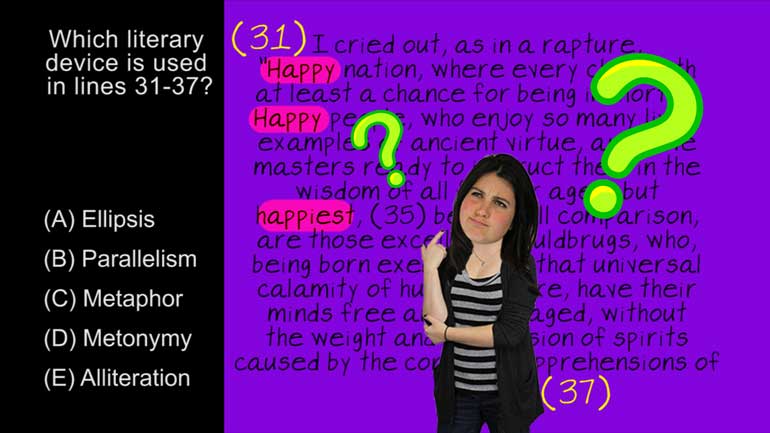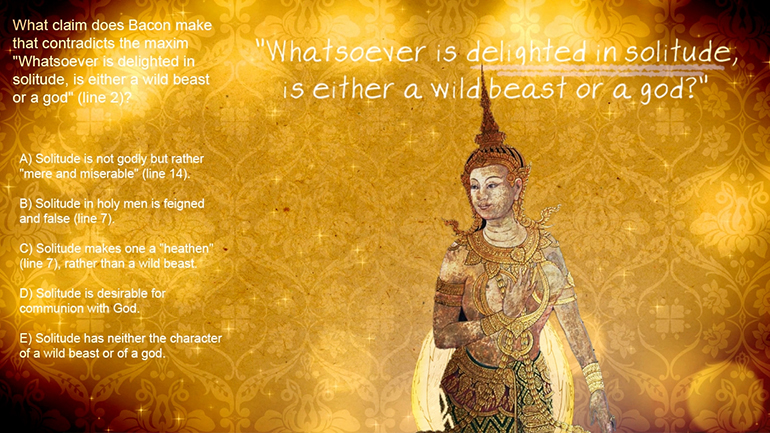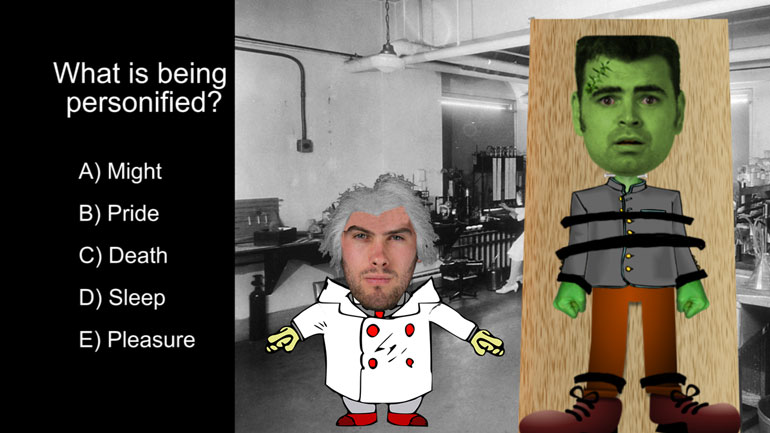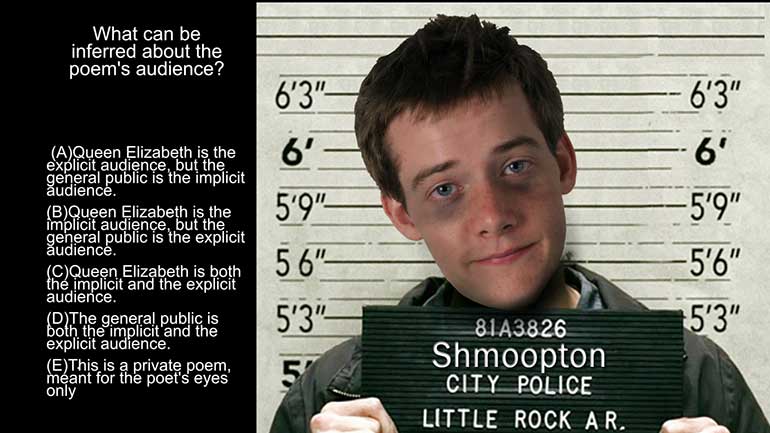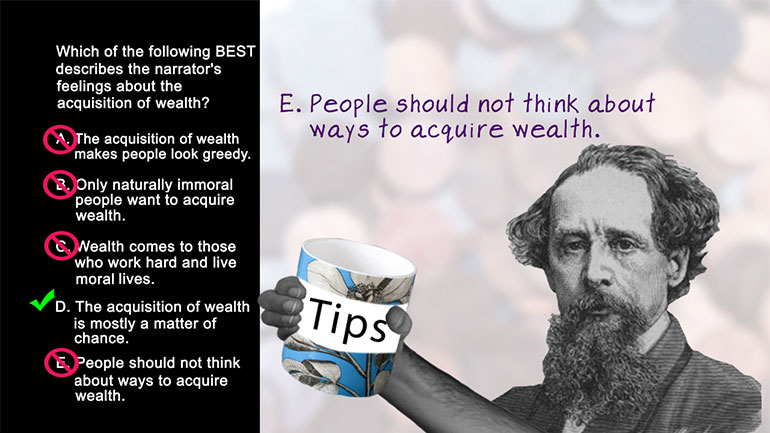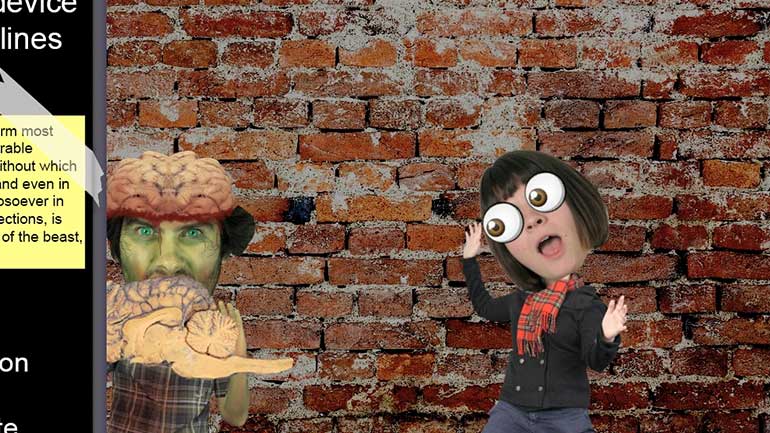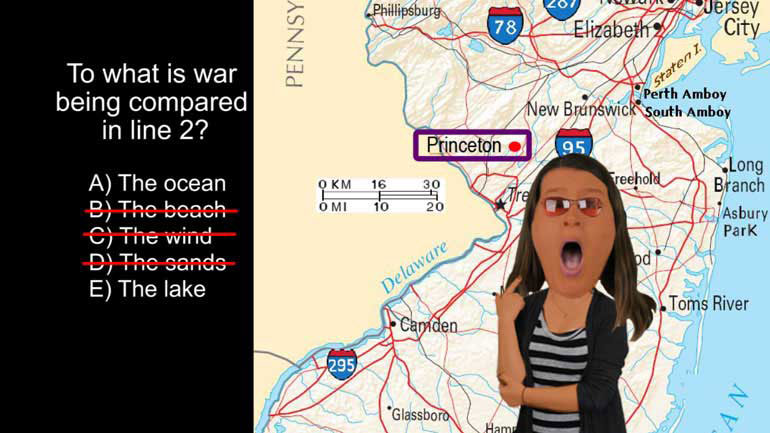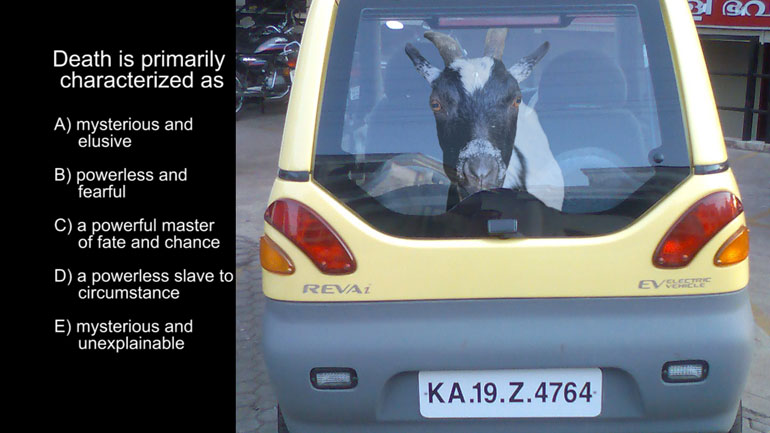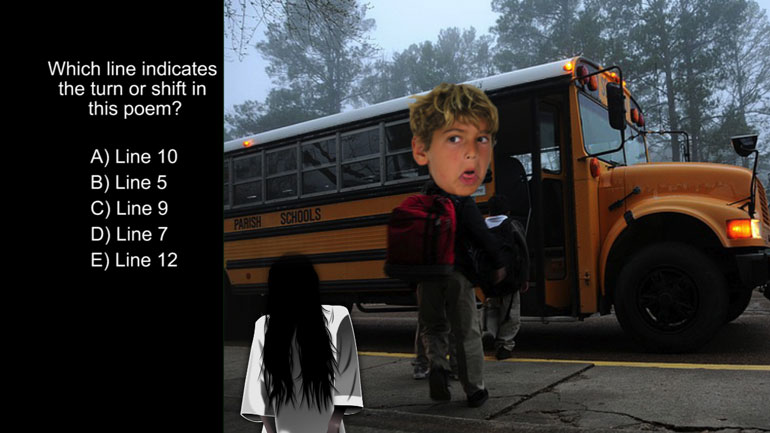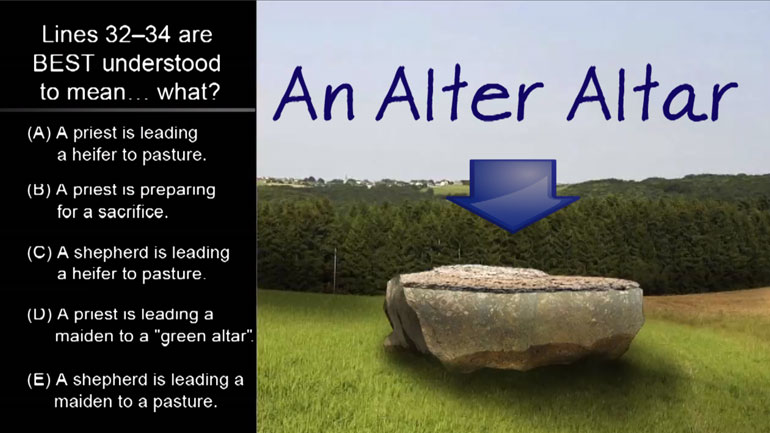ShmoopTube
Where Monty Python meets your 10th grade teacher.
Search Thousands of Shmoop Videos
Playlist AP® English Literature and Composition: Imagery and Figurative Language 13 videos
AP English Literature and Composition 1.10 Passage Drill 2. All of the following literary devices are used in this passage except what?
AP English Literature and Composition 1.2 Passage Drill 4. As which of the following is the object being personified?
AP® English Literature and Composition Passage Drill 1, Problem 1. Which literary device is used in lines 31 to 37?
AP English Literature and Composition 1.10 Passage Drill 2 252 Views
Share It!
Description:
AP English Literature and Composition 1.10 Passage Drill 2. All of the following literary devices are used in this passage except what?
- Product Type / AP English Literature
- English / Imagery and Figurative Language
- Literary / Poetic Structure, Prosody, Graphic Elementss
- Reading Literature / Analyze how an author draws on and transforms source material
- Vocabulary / Demonstrate understanding of figurative language, word relationships, and nuances in word meanings
- Reading Literature / Analyze how an author draws on and transforms source material
- Vocabulary / Demonstrate understanding of figurative language, word relationships, and nuances in word meanings
- Vocabulary / Demonstrate understanding of figurative language, word relationships, and nuances in word meanings
Transcript
- 00:03
Try this shmoopy question on for size... Last time you'll ever see this passage in
- 00:09
your life, we swear. Pause and review once more for good measure...
- 00:23
All of the following literary devices are used in this passage EXCEPT
- 00:27
And here are the potential answers...
- 00:33
Ugh, these questions are always toughies. Rather than just having to track down one literary device or reference, we have to track
Full Transcript
- 00:40
them all down to find out which one is missing.
- 00:44
And we don't even have access to a team of bloodhounds.
- 00:49
Let's take them one by one and see what we get...
- 00:52
Are there any allusions here? Allusions, in the literary sense, are references to something
- 00:57
outside the realm of the story at hand...
- 01:00
...and we certainly get that in lines 7 through 8. Check.
- 01:03
What about metaphor? Oh yeah -- gobs. Any time Bacon defends the value of friendship
- 01:08
by comparing it to something else...
- 01:10
...like when he talks about diseases of the body and compares them to weaknesses of the soul...
- 01:16
...he is employing metaphor. So B is accounted for.
- 01:19
Parallelism? Yeah, we got your parallelism... right here...
- 01:24
Especially in the first paragraph, when Bacon says that the first clause of a given maxim
- 01:28
is true, but the second clause is not.
- 01:31
And alliteration is the repeating of initial letter sounds at the start of words...
- 01:36
...and we have that in droves. So it must be E, right? Euphemism?
- 01:41
Indeed. Euphemism is the use of certain, gentler terms in place of something else.
- 01:47
Like if when he said "savage beast," he wasn't referring to actual beasts of the wild, but
- 01:52
instead something... slightly more risqué. But he isn't, so... it's not.
- 02:00
Answer E is the odd man out.
Related Videos
AP English Literature and Composition 1.2 Passage Drill 4. As which of the following is the object being personified?
AP English Literature and Composition 1.4 Passage Drill 3. How is Burne's view of pacifism best characterized in lines 57 through 67?
AP English Literature and Composition 1.6 Passage Drill 5. Death is primarily characterized as what?
AP English Literature and Composition 1.7 Passage Drill 5. Which line indicates the turn or shift in this poem?
AP English Literature and Composition 1.9 Passage Drill 4. Lines 32-34 are best understood to mean what?
